4 Content and quality of the Cultural Rucksack – status and further development
4.1 Introduction
The Cultural Rucksack is intended to allow school pupils to become familiar with, understand and appreciate all forms of artistic and cultural expression – music, theatre, the visual arts, literature, film, cultural heritage and crossover art, both classical and contemporary. These should be provided by professionals, represent cultural diversity and promote local ownership.
The programme should offer a wide range of activities, and include the innovative and the traditional, the familiar and the unexpected, the deeply meaningful and the entertaining, the complex and the challenging. They should appeal to the emotions, provide enjoyment, give food for thought and provide a basis for discussion.
The artistic and cultural activities offered by the programme should be based on quality in terms of both content and presentation. Productions by artists and cultural workers in and outside institutions should be of a professional standard. Each programme should offer a variety of activities and forms of presentation. Adequate information and material for preparation and follow-up by schools in connection with each activity should be provided.
The cultural sector is responsible for the quality and standard of the programme’s cultural content, and the quality of the productions should be assessed by qualified professionals. The county and municipal authorities are responsible for ensuring that productions under their auspices meet such standards.
Planning must be done in good time and in a dialogue with the school sector. Involving the school in the planning of preparation and follow-up ensures that the programme activities are relevant to and implemented in line with the school’s activities and work plan. The school and the individual teachers are responsible for setting aside time for preparation and follow-up, and decide how much time should be spent on these activities. It is essential that the school has thought seriously about the significance of culture and the arts for the pupils’ education.
The content of the Cultural Rucksack should be in line with the goals of the national and specific subject curriculums.
Table 4.1 Content of the programmes offered by the counties during the school year 2006–2007 by art form, production and individual event (preliminary figures)
| Art form | Productions | Individual events |
|---|---|---|
| Film | 131 | 1433 |
| Literature | 155 | 3229 |
| Cultural heritage | 132 | 4017 |
| Visual arts | 173 | 7847 |
| Theatre | 168 | 3583 |
| Music | 278 | 7079 |
| Crossover art | 41 | 760 |
| Not specified | 32 | 406 |
| Total | 1 110 | 28 354 |
Source Secretariat for the Cultural Rucksack
Table 4.2 Participation in county programmes during the school year 2006–2007 by art form (preliminary figures)
| Art form | No. of pupils |
|---|---|
| Film | 74 560 |
| Literature | 312 450 |
| Cultural heritage | 310 659 |
| Visual arts | 251 543 |
| Theatre | 344 624 |
| Music | 1 026 168 |
| Crossover art | 51 547 |
| Not specified | 212 838 |
| Total | 2 584 389 |
Source Secretariat for the Cultural Rucksack
4.2 Extent of the county programmes
In 2007 the Secretariat for the Cultural Rucksack in cooperation with the counties developed a new report form for Cultural Rucksack activities. The results for the school year 2006–2007 provide an overview of the extent and content of the county-organised programmes, although figures for the municipalities are not yet available. Further improvements will be made to the report form and procedures (see Chapter 6.5).
The preliminary figures show that in the school year 2006–2007 the counties organised a total of 1 100 productions in the fields of film, literature, the cultural heritage, the visual arts, theatre and music, and various combinations of these art forms. The counties organised 28 354 events, including concerts produced by Rikskonsertene. Of these events, 7 847 were in the visual arts and 7 079 in the music field. If crossover art and unspecified art forms are excluded, the smallest number of events, 1 433, was in the field of film. On the other hand, the figure for film productions is relatively high.
The figures show that the coverage for the Cultural Rucksack was almost 100%, in other words almost all primary and lower secondary pupils had participated in programmes offered by the county. In 2006, the participation figure was about 2.6 million. Given the total number of 640 000 pupils, this means that on average each pupil has attended four county-organised events. In addition, many pupils have attended events organised by the individual municipalities.
4.3 Programmes in the various cultural fields
A large number of national, regional and local institutions, individual artists and other professionals in the cultural sector contribute to the Cultural Rucksack.
In most art forms there are national resource institutions whose work includes development and network-building in the field. Examples of such institutions are Rikskonsertene; Norsk Scenekunstbruk (The National Touring Network for Performing Arts); Norsk Form; the National Museum of Art, Architecture and Design; the Archive, Library and Museum Authority; the Norwegian Film Institute; Arts Council Norway; and the Directorate for Cultural Heritage.
Local and regional cultural institutions are also important resources for the Cultural Rucksack. Examples of these are regional art and cultural institutions, libraries, museums, local archives, artists’ centres, independent groups and artists, voluntary bodies working with culture, and churches and other religious communities. Many of these cooperate with the county and municipal authorities on the public presentation of culture and the arts, professional development, network-building and quality assurance. In cooperation and across different fields of culture, many of these bodies should be able to develop a larger number of interesting cultural productions that will reach more schools and thus more pupils.
The Cultural Rucksack is an important area of work for artists and institutions, and has raised the status of cultural productions for children and youth. However, there is a long way to go before all the institutions that receive government grants, and are thereby responsible for making culture and the arts available to children and youth, do in fact contribute to a satisfactory extent to productions suitable for use in the programme. Institutions with national outreach may have more resources at their disposal that can be used to develop cultural productions for the Cultural Rucksack.
Norsk Tipping funds for nation-wide activities
Today 20% of the Norsk tipping funds to culture are allocated to national measures for promoting forms of art and culture that face special challenges. In 2007 this amounted to NOK 33 million, which was distributed between music, film, theatre and the visual arts. None of these centrally distributed funds are used to promote literature or the cultural heritage, but the six science centres have received a total of NOK 6 million of the regional funds.
Table 4.3 Allocations of Norsk Tipping funds to national measures by field of culture in 2007 (NOK million)
| Music | Rikskonsertene | 19 |
| Performing arts | Arts Council Norway | 3 |
| Scenekunstbruket | 3 | |
| Visual arts | The National Museum of Art, Architecture and Design | 2 |
| Nordnorsk kunstnersenter | 0.5 | |
| Norsk Form | 0.5 | |
| Trondheim kunstmuseum | 0.5 | |
| Lillehammer Art Museum | 0.5 | |
| Sørlandet Art Museum | 0.5 | |
| Rogaland Museum of Fine Arts | 0.5 | |
| Film | Norwegian Film Institute | 3 |
| Total | 33 |
Source Ministry of Culture and Church Affairs
Scenekunstbruket (The National Touring Network for Performing Arts), Rikskonsertene and the National Museum of Art, Architecture and Design use Norsk Tipping funds for activities that are part of their normal programme. The Film Institute and Arts Council Norway award grants for development projects.
Scenekunstbruket, Rikskonsertene, the National Museum of Art, Architecture and Design and the Film Institute have national outreach and cooperate with regional and local bodies. These institutions use a substantial part of their own funds in such efforts, and the Norsk Tipping funds provide an opportunity to take greater responsibility for the Cultural Rucksack.
The four regional art museums and Norsk Form have used Norsk Tipping funds to support development projects. Nordnorsk kunstnersenter has used these funds for an extensive programme of touring art projects for school pupils in the three northernmost counties.
The six science centres, Bergen Science Centre, the Science Centre of North Norway, Innlandets vitensenter, Vitensenteret i Trondheim, Jærmuseet and the Norwegian Museum of Science and Technology, together cover the whole country, and receive funding from both the Ministry of Education and Research and the Ministry of Culture. Their Norsk Tipping funds are used for activities under the Cultural Rucksack.
The central government funds and the share of regional funds that have until now been allocated to the science centres will for a certain period be diverted to the expansion of the Cultural Rucksack to upper secondary school (see Chapter 7). In future national cultural activities will no longer receive Norsk Tipping funds. Instead funds over the government budget will be earmarked for the Cultural Rucksack, and the cultural sector will work with the Cultural Rucksack as part of its ordinary activity.
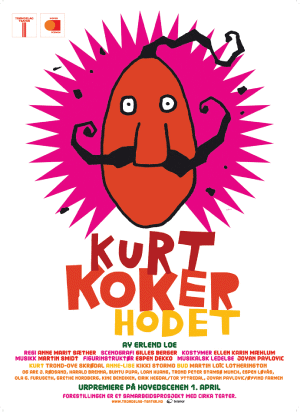
Figure 4.1 Theatre in a truck!
Photo: Trøndelag Teater
Table 4.4 School concerts by county for the calendar year 2006
| Østfold | 355 |
| Akershus | 808 |
| Oslo | 554 |
| Hedmark | 208 |
| Oppland | 350 |
| Buskerud | 468 |
| Vestfold | 384 |
| Telemark | 330 |
| Aust-Agder | 253 |
| Vest-Agder | 345 |
| Rogaland | 484 |
| Hordaland | 1083 |
| Sogn og Fjordane | 268 |
| Møre og Romsdal | 605 |
| Sør-Trøndelag | 464 |
| Nord-Trøndelag | 316 |
| Nordland | 659 |
| Troms | 463 |
| Finnmark | 212 |
| Svalbard | 5 |
| Totalt 2006 | 8614 |
Source Rikskonsertene’s annual report for 2006
4.3.1 Music
The national body responsible for the music field in the Cultural Rucksack is Rikskonsertene. In the course of almost 40 years the institution has built up a nation-wide programme of school concerts, which are arranged in cooperation with the counties. Agreements have been made between Rikskonsertene on the one hand and the county authorities on the other that define the division of responsibility for producing these concerts. The tour organisers at Rikskonsertene and those in the counties cooperate on planning concert tours. School concerts are the most important single item in the work of Rikskonsertene, which offers a broad programme to schools and pupils throughout the country.
The allocation to Rikskonsertene over the government budget was about NOK 135 million in 2007, of which about NOK 74 million was used to fund school concerts. Since 2004 these funds have been supplemented by annual grants of NOK 19 million from the government allocations to the Cultural Rucksack. This means that today Rikskonsertene’s activities cover all Norwegian municipalities, and pupils normally have the opportunity to attend two concerts a year. All musical genres are represented. In the calendar year 2006, 8 614 concerts were given, attended by a total of 1 238 303 school pupils. About 700 musicians a year are engaged to tour municipalities.
Rikskonsertene has an advisory programme committee with members from all parts of the country for quality assurance of productions, and in 2006 the institution established a resource and development centre under the department dealing with children and youth. One of the purposes of the centre is to strengthen cooperation between Rikskonsertene and counties, municipalities, schools, national institutions and organisations, the Cultural Rucksack and other institutions. The centre’s tasks also include evaluation and commissioned research on music presentation efforts aimed at children and youth, and international cooperation. In the last few years Rikskonsertene has emphasised the importance of involving the schools themselves in the organisation of concerts, for example by using pupils as event organisers (see Box 4.1).
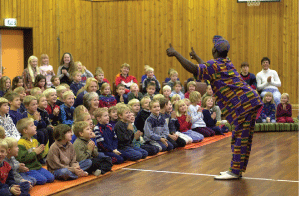
Figure 4.2 “Sokora”, a production by Rikskonsertene
Photo: Mimsy Møller/Rikskonsertene
In addition to the concerts offered by Rikskonsertene, some municipalities draw on the resources of the municipal schools of music and the arts for concerts by local performers. Some festivals offer concerts for schoolchildren in the area where the festival is taking place, and some orchestras have given performances for the Cultural Rucksack in cooperation with either Rikskonsertene or a county or municipality.
Further development
The national role played by Rikskonsertene in the music field will be further developed. The institution is interested in cooperating with other institutions and artists for the purpose of providing a more differentiated programme. The aim is to continue with projects and arrangements for schools that involve workshops, one-day visits, and process learning as part of the teaching of music under the Cultural Rucksack.
Rikskonsertene considers it very important to emphasise quality in terms of artistic performance, form of presentation, and standard of production throughout the value chain. It is important to continue the cooperation with local artists. An evaluation of the advisory programme committee has been commissioned for the purpose of strengthening its role, terms of reference and working methods.
Rikskonsertene’s resource and development centre is seeking to coordinate its work with that of the Norwegian Centre for Arts and Culture in Education and to supplement the work of the Centre where appropriate.
It is important that schoolchildren are able to attend professional music performances, not only at their schools but also in more public arenas, where larger groups like orchestras perform. The national music institutions and cultural nodes should cater for schoolchildren outside their region to a greater extent than they do at present.
Textbox 4.1 Pupils as event organisers
There is increasing awareness of pupils as a potential resource when artists visit the school. Rikskonsertene and Musikk i Skolen (Music for Schools) have developed an Internet-based instruction programme for pupils who are put in charge of the preparations for school concerts. The benefits are twofold: the pupils learn what organising a concert involves, and the musicians encounter a school that is well prepared and pupils who expect to enjoy the performance.
http://docs.rikskonsertene.no/eleversomarrangorer/ (site in Norwegian)
4.3.2 The visual arts
The visual arts include painting, decorative arts, architecture and design, and combinations of these art forms. The field covers both the visual arts heritage to be found in art museums and encounters with contemporary art and artists.
The National Museum of Art, Architecture and Design makes an important contribution to the Cultural Rucksack. It administers a large part of the country’s visual arts heritage and produces touring exhibitions and presentations, particularly of innovative contemporary art. On 1 July 2005 Riksutstillinger, the National Touring Exhibitions Norway, was incorporated into the National Museum, which assumed responsibility for making art available to the whole country. This national effort is carried out through the school network, the art gallery network and the museum network. The Museum promotes cooperation between the networks, produces exhibitions, and organises tours, public presentations and transfers of expertise.
In 2007 the Museum received approximately NOK 198.8 million over the government budget, of which about NOK 5.1 million was used for the school network. Since 2004 the Museum has also received annual grants of about NOK 2 million from the Norsk Tipping funds to the Cultural Rucksack, which are used for the production and organisation of activities under the programme.
In addition to its efforts in the school network, the Museum organises a considerable number of exhibitions for schoolchildren outside the school arena. These include exhibitions in the four museum buildings in Oslo and through the network of galleries in all parts of the country. These activities accounted for around NOK 5 million in 2007.
In the school network, the Museum has agreements with 12 counties and one municipality. The cooperation is regulated by letters of intent for four-year periods, and covers productions and competence-building in connection with the Cultural Rucksack. The current period runs from 2005 to 2008. In 2006 the Museum arranged 16 different touring exhibitions that were seen by almost 43 000 schoolchildren. To prepare teachers for helping the children to appreciate the exhibitions 28 seminars were held for a total of 241 participants.
Like Rikskonsertene, the Museum has an advisory programme committee consisting of internal and external experts, who quality assures touring exhibitions. The Museum cooperates with for example counties, independent artists and regional art museums on the production and exhibition of the visual arts.
In addition to the National Museum, there are a number of other institutions in the visual arts involved in the Cultural Rucksack. Norsk Form, the regional art museums, and other presenters of the visual arts offer schools a large number of activities and events, often in cooperation with the county authorities. It will be useful to explore other ways in which the regional art museums can provide even more opportunities for schoolchildren to appreciate the visual arts.
Other actors in this field are county art galleries, artists’ centres, art associations and independent artists engaged by counties or municipalities. So far, four regional art museums, together with Norsk Form and Nordnorsk kunstnersenter have received funding from the Norsk Tipping funds to the Cultural Rucksack. In 2006–2007 these four museums arranged activities for schoolchildren in their own regions and Nordnorsk kunstnersenter arranged activities for 4 500 pupils in the three northernmost counties. Norsk Form has cooperated with individual schools in some counties on presentations of art to schoolchildren.
In 2005 the National Museum was commissioned by the Ministry of Culture to draw up a plan of action for a country-wide effort to present the visual arts, the decorative arts, architecture and design to the public. Under the plan the Museum will serve as a national resource centre, and a number of measures are proposed to ensure that people throughout the country have an opportunity to appreciate art of a high quality, including crossover art, from a variety of different periods.
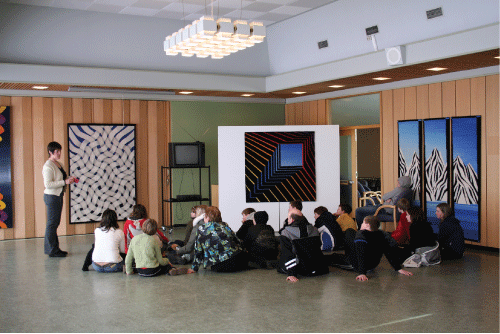
Figure 4.3 “Illusion”
Photo: Øksnes Art Association
Further development
It is a policy objective that every child in the country should have an opportunity to become acquainted with different forms visual art provided by professionals during their school career, and this includes visiting art exhibitions held in suitable premises outside the school buildings.
As a national institution, the National Museum of Art, Architecture and Design should promote the production of activities and the further development and coordination of efforts to bring the visual arts to schoolchildren as part of the Cultural Rucksack. This involves both presenting the visual arts heritage and providing opportunities for them to see contemporary art and meet artists.
Technological advances are providing new ways of making the visual arts available to schoolchildren in every part of the country, and it is one of the tasks of a national institution to be a driving force in the development of such methods. The National Museum should also ensure that the Cultural Rucksack has access to a well-functioning network in the visual arts and promote developments in the field. The facilitation of a network for the Cultural Rucksack is a natural part of the Museum’s responsibility for the national art museum network.
The best way of developing methods of bringing the visual arts to schools is to strengthen the role of the regional art museums as producers and presenters of professional art, and promote dialogue and cooperation between these institutions and centres of national expertise. In this process the National Museum’s 2005 plan of action will be revised and made more specific so as to clarify the division of roles and responsibilities with regard to the regional art museums and the other institutions involved.
4.3.3 The performing arts
Theatre, opera and dance institutions and independent groups all put together productions for the Cultural Rucksack.
Scenekunstbruket is a national promotion system for completed productions by independent theatre groups run by the Norwegian Association for Performing Arts. The network facilitates tours of stage productions, with an emphasis on children and young people. The network has become the most important facilitator of stage productions for the Cultural Rucksack; for example in the calendar year 2006 it was responsible for 2 350 performances of 57 productions, which were attended by 230 000 people, all in connection with this programme.
In 2007 the Norwegian Association for Performing Arts was allocated NOK 2.974 million from the Ministry of Culture’s budget for use by Scenekunstbruket, and since 2004 Scenekunstbruket has received an additional NOK 3 million a year from Norsk Tipping funds.
Scenekunstbruket has a network of event organisers and promoters that includes a number of counties and municipalities. Currently 16 counties and 369 of their municipalities are members.
Scenekunstbruket has an overview of non-institutional theatre throughout the country. The network attends performances and monitors the quality in cooperation with an expert reference group and in a dialogue with the county network. Artistic quality is emphasised, but the diversity of the total repertory, including a diversity of theatre forms and production formats, is also considered important.
Event organisers that are part of the network can choose freely from the entire repertory. They then contact the group or performer and draw up a contract for a particular performance or tour. With regard to the Cultural Rucksack the event organisers are usually at county level and cooperate with the municipalities on booking tours that fit in with the county programme.
Scenekunstbruket has a scheme for financial support for event organisers, under which a share of the total costs of the performances selected from its repertory is refunded. The size of the refund is calculated on the basis of the figures presented in the county’s annual report, and the amount varies from year to year according to the funds available to Scenekunstbruket and the total number of activities receiving support. The greater the number of productions from the repertory organised by a county, the larger the refund it receives.
Scenekunstbruket also arranges competence-building activities for event organisers and performing artists, with particular emphasis on the Cultural Rucksack. It arranges the performing arts festival Showbox, which serves as a meeting place for artists and organisers.
The major theatre institutions and regional theatres have contributed in varying degrees to the Cultural Rucksack. The larger institutions have a longer planning horizon than the independent groups and smaller institutions, and they should be able to put on productions for schools to a greater extent than is being done at present. Some of the smaller institutional theatres, on the other hand, have put on a considerable number of productions for the Cultural Rucksack. However, the most important aspect of such productions is high artistic quality, regardless of which producer is responsible. The theatre programme should provide diversity in terms of both content and producers. The quality of the productions must be monitored and no particular institution should have a monopoly.
Support for new stage productions
Some counties award grants from their Cultural Rucksack budget to stage productions, but many do not. Since 2004 Arts Council Norway has received NOK 3 million a year of Norsk Tipping funds to be used for new stage productions for the programme, targeted at independent theatre groups. In 2007 the Council received 82 applications, 16 of which received project grants. Most of the 2007 applications were from groups in Oslo County (41), followed by those in Akershus (7), Sør-Trøndelag (5) and Tromsø (4). There were no applications from the counties of Østfold, Oppland, Nord-Trøndelag, Finnmark, Aust-Agder or Vest-Agder.
One of the conditions stipulated by the Ministry of Culture for such support is that Arts Council Norway and Scenekunstbruket cooperate on use of the funds. In practice this means that the Council informs Scenekunstbruket which productions it intends to support. However, not all applications for support are submitted through Scenekunstbruket’s county network.
The scheme has been in operation for three years and it has become obvious that there is a discrepancy between the size of the grants to projects and the amount spent on stage performances. The Ministry will therefore examine how the funds can best be used for new stage productions and performances for the Cultural Rucksack.
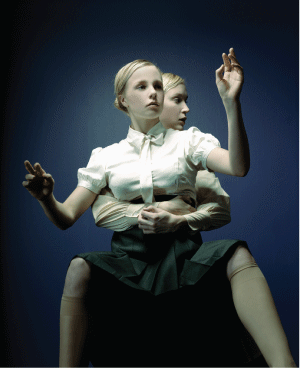
Figure 4.4 “Så tag nu mine händer” (Take My Hands)
Photo: Siren Lauvdal
Further development
Like other fields, theatre needs a national institution that will encourage new productions, build networks, facilitate competence-building and provide expert advice. The most appropriate institution for this seems to be Scenekunstbruket, on condition that all the counties can be included.
There is a great need for high-quality, innovative new productions, especially those that challenge pupils’ assumptions about theatre, from both institutions and independent groups.
In order to ensure a better correspondence between productions and performances of free theatre, the Ministry of Culture will consider whether the funds for new theatre productions should go to Scenekunstbruket rather than Arts Council Norway. This will be considered in relation to the plans for reorganising the distribution of Norsk Tipping funds to the Cultural Rucksack (see Chapter 7).
It is important that institutions that possess substantial funds for new theatre productions contribute actively to the Cultural Rucksack. Pupils should also be able to see professional theatre outside the school arena. Cooperation between Scenekunstbruket and Riksteatret would be a good way of ensuring that a greater number of theatre productions from the large theatre institutions are included in the programme.
The Ministry of Culture is preparing a White Paper on the performing arts that will contain information on the current status of publicly financed theatre in Norway, including professional theatre performed under the Cultural Rucksack programme. An overview will be given of the geographical distribution of permanent and touring theatre productions, and will take up particular issues, such as theatre for children and youth. Establishing cooperation between Scenekunstbruket and Riksteatret will be considered in more detail in the White Paper.
4.3.4 Film
The White Paper on film (Report No. 22 (2006–2007) to the Storting) stated that film projects for children and youth should be given priority and form an integral part of film policy. It also stated that responsibility for central government-administered film projects for children and youth throughout the country should be strengthened and coordination between the various institutions should be improved. The White Paper proposed reorganising central government activity in this field by establishing a new film institute to take over the functions of the Norwegian Film Fund, Norwegian Film Development and the existing Norwegian Film Institute.
The Storting approved the main lines of the proposals in the White Paper and the new Norwegian Film Institute will become operative in April 2008. The establishment of this new institution will also have consequences for the organisation of film projects for children and youth.
Currently national film projects for children and youth are supported by the existing Film Institute and FILM&KINO. FILM&KINO is a member organisation for municipalities and a trade organisation for the cinema and film industry. It also administers the Norwegian Cinema and Film Foundation. The organisation’s tasks include initiating and supporting school cinema projects, for which it receives substantial annual support from the Cultural Rucksack among others, and developing educational material for the use of film in teaching. FILM&KINO cooperates with the county authorities and arranges regional school cinema tours as part of the Cultural Rucksack.
The existing Film Institute is currently responsible for other activities in film aimed at children and youth, such as acquiring, producing and distributing short films and documentaries. It is also responsible for providing information to young Norwegian film-makers, for example through projects like the Nordic website www.dvoted.se.
NOK 3 million is allocated from the national share of Norsk Tipping funds to film projects for the Cultural Rucksack, and these are currently administered by the existing Film Institute. In 2006 the Institute received 41 applications for funding, and 24 film projects received support. A further six crossover projects received funding through the cooperation between the Film Institute and Arts Council Norway. The Institute has also provided considerable support for regional and local film activity under the Cultural Rucksack.
Films for children and youth are also produced by regional film centres, municipal cinemas, media workshops and freelance film-makers, often in cooperation with counties and municipalities.
Textbox 4.2 “JAMSÍIS”
“JAMSÍIS” is an innovative, light-hearted theatre project that uses animation and new video technology. The pupils participate in a story by Hallgrim Hansegård from Dansekompaniet FRIKAR. Hansegård plays the head of a shadow theatre where the shadows go on strike because his dancing is too acrobatic.
The audience (10- to 15-year-olds) have attended a workshop where they learned to make Hallgrim’s shadows for parts of the show. Otherwise the shadows are created by live video improvisations. “JAMSÍIS” was produced with funding from the Norwegian Film Institute and Arts Council Norway, and features the artists Bruna Caverna, with a background in capoeira, and Hallgrim Hansegård, with a background in traditional Norwegian music and a particularly lively folk dance called “hallingdans”. The music was composed by Maja Ratkje.
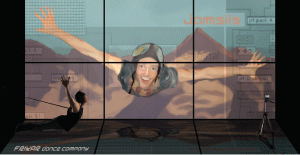
Figure 4.5 From the project “JAMSÍIS”
Photo: FRIKAR dance company
Further development
The White Paper on film confirmed that FILM&KINO has the main responsibility for film activities for children and youth. The institution is in close contact with municipalities and local cinemas and has experience of promoting school cinema. The Ministry of Culture is conducting a dialogue with FILM&KINO on the future division of work between the various bodies in the film sector, including the work on the Cultural Rucksack.
The new Film Institute, FILM&KINO and the Ministry of Culture in cooperation will draw up a plan of action for work with children and youth when the Film Institute is operative.
4.3.5 Literature
There are a large number of actors that foster children’s acquaintance with literature. The main national institutions are the Norwegian Institute for Children’s Books, Foreningen !les and the Norwegian Writers’ Centre. The Cultural Rucksack is mentioned explicitly in the national action plan “Make Space for Reading!” County, local and school libraries are important in the literature field; they are repositories of knowledge and possess a broad and varied range of literature. In the evaluation of the action plan many schools emphasised the importance of county and local libraries as external cooperation partners in the work of educating pupils about literature.
Besides public libraries the other main actor in the literature programme under the Cultural Rucksack is the Norwegian Writers’ Centre, which has been arranging visits by writers to schools all over the country since 1968, some of whom hold writing courses for schoolchildren. In 2006 the Centre arranged visits to over 7 000 classes. The Writers’ Centre has offices in Oslo, Bergen, Trondheim and Tromsø, and cooperates with counties on arranging tours for schools.
Another important resource for the Cultural Rucksack is Litteraturbruket, a resource centre for encouraging cooperation and providing qualified support for the promotion of published literature. The centre was established by the Writers’ Centre with support from the Freedom of Expression Foundation and Arts Council Norway. It is intended as a national arena for establishing, coordinating and promoting literary works.
Textbox 4.3 Poetry festival in Hamar
The annual poetry festival in Hamar is organised by Hamar Municipality, Hamar library, the municipality’s three lower secondary schools and the Cultural Rucksack in Hedmark County. The aim is to give pupils a sense of ownership of poetry as a form of expression, and the festival gives them an arena where they are encouraged to play around with words and forms of expression.
In 2007 the theme of the festival was poetry in relation to music. Workshops and other activities were arranged at the schools and elsewhere. The activities included writing courses, a guitar workshop, a Prøysen evening (Alf Prøysen was a well-known Norwegian poet) and a poetry market. There was also a crossover project entitled “Haikutroniks”, in which old Japanese haikus translated into Norwegian were set to electronic music. At the end of the festival the various workshop productions were presented to the public.
The poetry festival was very popular with the pupils, especially the boys, many of whom revised their views on poetry quite considerably. They learnt to overcome some of the barriers surrounding this form of literature, and discovered that there are no wrongs or rights in poetry.
Further development
The establishment of the Cultural Rucksack as a national programme has resulted in a growing demand for literature presentations. Acquainting all schoolchildren with literature as an art form requires new measures.
There is a need in this field for a national body to form networks, coordinate activities and be responsible for competence-building and quality development. Concentrating responsibility in a single institution will improve the management of resources and build expertise on the promotion of literature. The work of such a body should cover a broad field, and it should strengthen networks, promote cooperation between the various actors and build expertise in the development of crossover projects, in cooperation with other art forms.
The Ministry of Culture is currently preparing a White Paper on the library sector, based on the report “Bibliotekreform 2014” (Library Reform 2014), which was submitted by the Archive, Library and Museum Authority. The report proposes a number of activities for children and youth that relate to the Cultural Rucksack, but it is too early to say how far these proposals will be adopted. In the White Paper the Ministry will discuss which body should be given responsibility for coordinating the efforts to promote literature under the Cultural Rucksack.
4.3.6 The cultural heritage
Knowledge and insight regarding Norwegian traditions and the cultural heritage are an important part of the Cultural Rucksack throughout the country. The field of cultural heritage includes museums, science centres, archives and the cultural heritage authorities, which should be more closely involved with the programme. Religious institutions are also important resources, and there are a number of voluntary organisations concerned with history and the cultural heritage that would make interesting partners, especially in the fields of local history and knowledge of local handed-down skills.
The Norwegian museum sector is large and varied, and ranges from small local collections to university museums and the major art, cultural and natural history museums. Visits to larger museums, including university museums, have long been part of the school curriculum and have given pupils an opportunity to become acquainted with and reflect on various forms of art and culture. Most of the museums arrange activities as part of the Cultural Rucksack, and museum statistics show that in 2006, 358 711 pupils took part in activities offered by museums.
One of the tasks of the Archive, Library and Museum Authority is to encourage innovation in the museum sector through project funding. The Authority also deals with the improvement of educational presentations by museums, and in cooperation with Oslo University College has developed an educational programme in this field. Since 2003, 20 museums have received earmarked grants over the budget of the Ministry of Culture. These funds are no longer earmarked, but all museum allocations from the Ministry’s budget are linked to the requirement that the museums give priority to educational presentations to schoolchildren.
The Ministry of Culture will present a White Paper dealing with university museums in spring 2008. One of the subjects to be addressed will be the museums’ potential to contribute to the Cultural Rucksack.
The science centres provide educational presentations through interactive exhibitions that allow visitors, particularly schoolchildren, to explore natural, cultural, environmental, health and technological phenomena through experiment and activity. The centres serve as arenas for interactive learning and link science with local knowledge, creativity and originality. Several of the centres present science in the context of cultural history, particularly the two science centres that are also national museums, the Norwegian Museum of Science and Technology, and Jærmuseet.
Textbox 4.4 “The hunt for pests” – pupils as a resource for a regional museum
Dalane folk museum in Egersund has started a cooperation project with the fifth grade at one of the local schools. The children were taught about the various pests that can attack museums, and were given equipment for detecting harmful beetles, insects and other pests. The experience taught them about their local museum and about museum pests, and gave them an opportunity to make their own contribution by helping to care for the exhibits. The result was greater interest among the children in the museum, its exhibits and its buildings. A win–win situation!
Source Anne Tove Austbø (ed.) L97 and the museums, Norsk Museumsutvikling 3:2000.
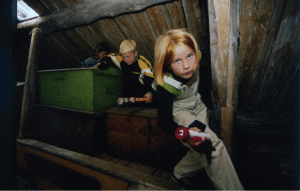
Figure 4.6 “The hunt for pests”
Photo: Egil Mong
All six science centres, Bergen Science Centre, the Science Centre of North Norway, Innlandets vitensenter, Vitensenteret i Trondheim, Jærmuseet and the Norwegian Museum of Science and Technology, have in recent years received funds from the Cultural Rucksack to enable them to provide activities for pupils throughout their respective regions, so that together they cover the whole country. The Ministry of Education and Research also supports the centres through the Research Council of Norway.
In the archive sector the Archive, Library and Museum Authority has developed a presentation project for schools with the aim of promoting cooperation between archives and schools. Eleven archives have participated in the project, enabling several hundred pupils to become acquainted with this field.
Textbox 4.5 Cultural Heritage Year 2009
The Government has decided that 2009 is to be a cultural heritage year, during which efforts will be made to show the inherent potential of the cultural heritage. The aim is to reduce the destruction of cultural monuments and sites and safeguard them so that future generations can also enjoy them. It is important to make people aware of the value of a diverse cultural heritage, especially as a source of knowledge and enjoyment.
It is important for pupils to become aware of the value of the cultural heritage. It is an irreplaceable source of information about the historical development of our environment and about people’s relationships with one another and with nature, promoting knowledge and enabling us to appreciate the past. The Ministry of the Environment is responsible for management of the tangible, or physical, cultural heritage.
The Ministry of the Environment wishes to encourage the Cultural Rucksack programme to put greater emphasis on the cultural heritage at both regional and local levels. This could be done by creating regional meeting places where schools, authorities, museums, cultural workers and others can exchange ideas and experience and develop projects. Another important step would be to coordinate the activities of the programme in this field with those of sustain.no, which is an educational tool for sustainable development.
The Directorate for Cultural Heritage is the advisory and executive body for the Ministry of the Environment. It is responsible for implementing the Government’s cultural heritage policy and has the overriding technical responsibility for the work of the regional cultural heritage authorities. The Directorate has long experience of cooperation with the education sector through its work with sustain.no.
Religious belief has an aesthetic dimension that over the centuries has been expressed in terms of art and culture. The Church of Norway manages a considerable part of the cultural heritage in the form of Norway’s approximately 1 600 churches. The rich cultural material in many of these churches is a source of knowledge and understanding of the past, and a builder of local identity. Church life, the liturgy, and religious music and texts can also be utilised in professional presentations of art and culture in the Cultural Rucksack. Diversity is an important element in the programme and children need to be made aware of the religious diversity in Norway and the cultural legacy this represents.
Textbox 4.6 “The Bomb Shelter”, a cooperation project involving writers and archives
The bomb shelter project was developed by Stiftelsen Arkivet (a foundation working with information, documentation, education, research and culture) in Kristiansand in cooperation with, first, the writer Gaute Heivoll and later the writer and teacher Eystein Ellingsen.
The purpose of Stiftelsen Arkivet is to own and administer the State Archive of Kristiansand, which from 1942 to 1945 was the headquarters of the Gestapo in Southern Norway. The Archive is now an information centre on Norway and the region during the Second World War, and an education centre for forward-looking work on peace and conflict resolution. Its aim is to promote knowledge and awareness of democratic values and human rights.
The bomb shelter project gives the pupils knowledge and awareness of their cultural heritage in authentic surroundings, and in the context of both the past and the present. The children meet a professional writer and participate in workshops. They also write down their interpretations and ideas.
The first part of the presentation takes place in the bomb shelter. The shelter is the last public bomb shelter in Kristiansand that dates from the last world war, and the pupils experience what it was like to live in constant fear of bombs. The writer encourages the children to write about incidents in their own lives that they associate with the feeling of being shut in.
The pupils then visit the Archive, where they are shown round and do further work on their texts together with the writer.
The texts are published on the website http://www.stiftelsen-arkivet.no/tilfluktsrommet, which can also be visited by other pupils and used as a basis for assignments and discussions.
The project is a very popular activity under the Cultural Rucksack in Vest-Agder County.
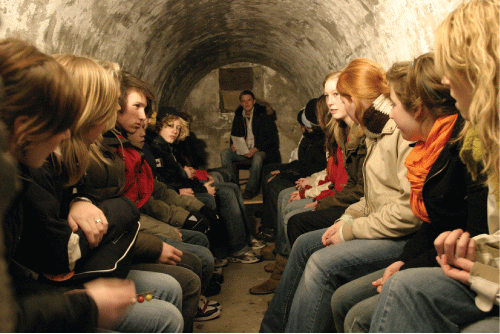
Figure 4.7 The bomb shelter project
Photo: Sol Nodeland/Stiftelsen Arkivet
Further development
The field of cultural heritage has always been an important part of the school’s teaching. Work with the Cultural Rucksack has in many ways served as a stimulus for professionals in this field to develop new methods of presentation and crossover projects.
In a field that involves so many different professionals with different backgrounds, the requirement of a professional standard of presentation, in which information has to be given in terms appropriate for schoolchildren, can be a problem. It will be important to coordinate the available resources, especially at the local level, so as to ensure that pupils become acquainted with a variety of different aspects of the local, national, and international cultural heritage. The requirement of professionalism is the same as in the arts.
Cooperation between the different actors in the cultural heritage field needs to be improved. It would be useful to examine how presentations of the cultural heritage can be combined with other forms of art and culture in ways that arouse the pupils’ interest and curiosity.
The Cultural Rucksack should also give pupils the opportunity to become aware of the diversity of art forms and approaches represented in religious art, and steps should be taken to include a variety of cultural expressions from different religions.
The Archive, Library and Museum Authority is the national body responsible for enhancing the quality of cultural heritage presentations in the programme. The Authority will contribute to further development in this field through networks, information campaigns and competence-building. It is important to involve the Directorate for Cultural Heritage in the development efforts.
4.4 Quality and professionalism
There is often a thin line between the professional and the non-professional. Generally speaking a professional is a person whose occupation involves artistic or other cultural activity. However, there are bodies and individuals that are not professional but that have local knowledge or knowledge of handed-down skills, especially in the cultural field, and these can be a valuable resource for the Cultural Rucksack. Their activities or productions must be evaluated by qualified professionals in the same way as other activities and productions in the programme.
The cultural sector is responsible for providing art and culture of a professional standard and a high quality, while the school is responsible for integrating the events and activities into the school day and linking the projects with the curriculums for the various subjects. This often involves preparation and follow-up activities, and requires advance planning. This makes learning more interesting for the pupils, and ensures that they do not feel that the programme is an outside activity unrelated to their schoolwork.
Maintaining a high level of quality and creativity in the programme requires an ongoing discussion between the actors involved, especially as regards the concept of art and how it should be interpreted. An evaluation of the quality of the pupils’ encounter with examples of art and culture must take account of the following factors:
what is being presented,
how well it is being presented,
the pupils’ response and assessment of the activity,
the teachers’ knowledge of art, cultural subjects and the cultural heritage,
how well the school caters for cultural activities,
how well the school leadership and teachers integrate the activities with the subjects being taught, including the preparation and follow-up activities,
communication and the information flow between those involved.
Because the cultural and school sectors complement each other, both must be involved in these efforts. Each has its own role: the cultural sector has the expertise necessary for assessing the quality of the artistic and cultural content, presentation method and the event itself, and the school sector has the expertise necessary for assessing how far the content is appropriate to the curriculum, the level of the target group and how to facilitate learning and appreciation among the pupils.
It is neither possible nor desirable to apply fixed criteria for the quality of the programme content. This should be the subject of an ongoing dialogue between the two sectors, in meeting places and networks and through systematic feedback. The activities must be quality assured by experts.
The counties and municipalities have a special responsibility to facilitate systematic feedback from schools and pupils on the presentation, and the artists must be given an opportunity to report on the schools’ response to the event. A strategy will be drawn up for incorporating research and evaluation in the Cultural Rucksack on a permanent basis (see Chapter 6.4).
Textbox 4.7 Feedback system
A number of counties have procedures for systematic feedback from both schools and artists. The body responsible for arranging tours in Hedmark County sends out a form to all the artists and some of the schools that participate in the programme. Such feedback may also be given digitally, through the county’s planning tool.
Textbox 4.8 “Kunstfyret”
“Kunstfyret” (the Art Lighthouse) is a cooperation project between the Cultural Rucksack in Akershus County, the artist Tony J. Larsson and the composer Bjarne Kvinnsland. It makes use of art, music and cultural history presentations, with active participation by the pupils.
The event takes place on Steilene, an island in the Oslofjord that has a lighthouse and accommodation for the lighthouse-keeper. The pupils spend a whole school day there, learning all about the island and its history. An important part of the project is to enable the pupils to become aware of how nature influences art. They draw and paint under the guidance of Tony Larsson, and record sounds and use them to make music with Bjarne Kvinnsland. They also take and edit digital photographs, and there is a course for pupils with a special interest in art.
Further development
The national bodies responsible for the Cultural Rucksack have an important role to play in strengthening and promoting the efforts to ensure the quality of the programme. Quality assurance is the responsibility of the county and municipal authorities, while the schools are responsible for preparation and follow-up in connection with the various activities.
One way of ensuring quality is by promoting new productions, since experience so far has revealed a chronic shortage of high-quality productions. There are too few innovative productions, productions that reflect today’s society, and productions that challenge received ideas about art. Unless it is dealt with, the situation will be worse when the programme is expanded to upper secondary schools.
As part of its efforts on behalf of children and youth, Arts Council Norway has launched the Art Initiative (Kunstløftet), a project to enable all Norwegian children and youth to enjoy innovative art and culture of a high quality. The project is being developed over a number of years and the aim is to facilitate productions for children and youth. Professionals in the arts fields will be encouraged to take advantage of the available expertise on art and childhood. The project is also part of the efforts to enhance quality in the activities under the Cultural Rucksack.
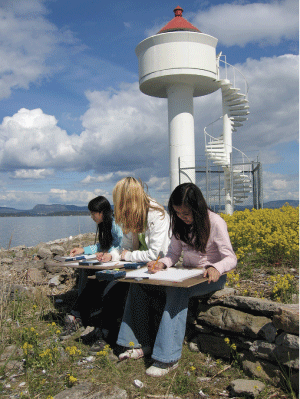
Figure 4.8 “Kunstfyret” (the Art Lighthouse)
Photo: Tony L. Larsson
4.5 Presentation methods
There are many different ways of presenting art and culture, and the Cultural Rucksack reflects this. The various cultural expressions are presented individually or as crossover projects.
The terms “monologue” and “dialogue” are used in the evaluation report to describe different forms of cultural presentation, but the Ministry of Culture does not consider these terms to be applicable to art and culture. Even in a performance, where it is the performers who seem to be responsible for most of the action, there is always a large element of dialogue with the audience. Viewing and listening are also active processes, and even when an audience is sitting still, they are usually actively learning and appreciating the performance.
The line between being an active member of an audience and being an active part of a process is also blurred. For example, many performances under the programme have an element of participation since some of the pupils are on stage. Furthermore, performances by pupils alone that are important for schoolwork may be part of the follow-up for which the school is responsible. In Cultural Rucksack activities, however, the artistic and professional aspects must always predominate.
The Cultural Rucksack allows schoolchildren to participate in a creative process together with a professional artist or other professional and, in the case of the performing arts, as the audience. Many performing artists conduct workshops that involve pupils in the creative process.
In the performing arts, some presentations challenge and experiment with the border between stage and hall, performer and audience. In other cultural activities, like literature or cultural heritage presentations, acting is used to broaden and intensify the experience. Thus the programme includes a number of activities where the borders between different forms of expression are crossed or blurred.
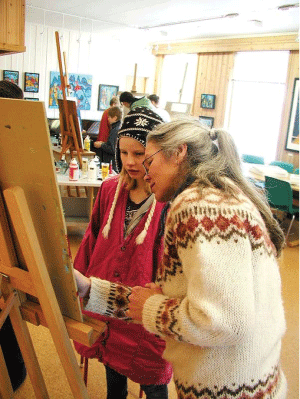
Figure 4.9 Tone Toft’s studio
Photo: Tone Toft
Further development
It is important to develop different presentation forms within the various cultural expressions that engage the pupils and arouse their enthusiasm. The Cultural Rucksack has a special responsibility here, but both counties and municipalities have to ensure that the choice of activities includes a variety of presentation methods and arenas, from schools to cultural buildings. Preparation and follow-up of the cultural activities should continue to be the responsibility of the school.
4.6 Cultural diversity
There is increasing awareness, both nationally and globally, of the importance of cultural diversity in the development of a society. It is an international perception that in societies where cultural policy promotes and facilitates the positive aspects of pluralism, cultural diversity serves as a source of creativity and development. It is therefore not necessary to choose between a single national culture and a diversity of cultures.
This awareness was reinforced at the UNESCO General Conference in 2005, when an overwhelming majority of states adopted the Convention on the Protection and Promotion of the Diversity of Cultural Expressions. The convention was ratified by the Norwegian parliament in December 2006.
Norway has always been a multicultural country, where cultural expressions are constantly changing and new ones being formed in contact with other cultures. This cultural diversity also influences the cultural heritage, and it is important to raise awareness of the culture of the Sami, national minorities and new minority groups (see sections 4.7 and 4.8).
It is important that children and youth learn about the different cultures in Norway, and this is therefore a permanent dimension of the Cultural Rucksack. The programme should reflect the same diversity of cultures as the children themselves. Thus art and cultural expressions that reflect religious traditions and practices, both Christian and others, are an important part of the programme.
The actors involved in the Cultural Rucksack should ensure that the programme as a whole reflects this cultural diversity. This will not only benefit the individual pupil, it will also reduce social, cultural and economic barriers. Culture has a significant influence on the conditions that qualify individuals to participate fully in society at large, and therefore plays a significant role in integration.
It is important that all pupils are able to derive the same benefit from culture and the arts irrespective of ability or background. Pupils that speak minority languages may need help with language, and practical adaptations of the physical environment will be necessary for pupils with disabilities. Strategies and measures for meeting these pupils’ needs will differ from school to school and municipality to municipality, but the planning of programme activities must take this into account.
When planning for cultural diversity under the programme, the various cultural groups in the region or municipality represent an important resource. Art and culture can build bridges between different cultures and ethnic groups and promote democratic values, tolerance and social justice. The understanding of different cultures provided by the Cultural Rucksack is valuable for the children; it helps pupils with a minority background to feel proud of their culture and puts them on an equal footing with the majority.
Textbox 4.9 The Norwegian Year of Cultural Diversity 2008
The Storting approved the Government’s proposal to make 2008 a year to celebrate cultural diversity in Norway. The aim is to make people aware of the multicultural perspective in every field of art and culture and to establish meeting places between the majority and minority cultures. Institutions and projects that receive public grants for cultural activities are expected to ensure that these reflect this diversity and increase knowledge in the field. The Year of Cultural Diversity will not be limited to this period of time, but marks the start of a process in which cultural diversity is a prominent and cross-sectoral feature of Norwegian cultural policy. See www.kultureltmangfold.no.
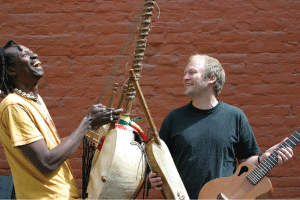
Figure 4.10 “Friends”
Photo: Rikskonsertene
4.7 Presentation of Sami culture
In its comments on the evaluation report the Sámidiggi (Sami parliament) stated that the Sami dimension was not given sufficient attention in either the steering documents for the Cultural Rucksack or the report itself. The Sámidiggi referred to Article 110 a of the Constitution, which states that: “It is the responsibility of the authorities of the State to create conditions enabling the Sami people to preserve and develop its language, culture and way of life.” The Sámidiggi stated that it considers that Sami art and cultural expressions should be a natural and important part of the Cultural Rucksack, and that it should be given allocations for this purpose on the same basis as the allocations to the counties. It also proposed that Sami cultural institutions should receive government project funds.
The Norwegian authorities have a special responsibility to safeguard and strengthen Sami culture. The Government is aware of this responsibility, and will therefore follow the development of Sami culture closely and provide favourable conditions for Sami culture and the Sami community. If Sami culture is to continue to exist, it is important that Sami children and youth feel secure about their language and culture, and do not feel that there is a conflict between these and the majority culture. The Cultural Rucksack will contribute to such identity-building.
Sami art, culture and cultural heritage should be an integral part of the Cultural Rucksack. This will help to preserve and strengthen Sami culture and enable other children and youth to become acquainted with it.
The counties have a particular responsibility for administering and coordinating the Cultural Rucksack programme (see Chapter 5.3). They administer the largest share of the Norsk Tipping funds allocated to the programme and distribute these to the municipalities. They also spend considerable sums from their own budgets on the programme, including administrative costs.
The counties and municipalities are responsible for ensuring that all pupils up to and including lower secondary school, and gradually in upper secondary school as well, have an opportunity to become acquainted with professional art and culture in a variety of forms. This also applies to Sami pupils and pupils of Sami origin. The authorities also have a responsibility to ensure that Sami art, culture and cultural heritage are presented to other pupils and in other schools. The Ministry of Culture will ensure that this requirement is clearly expressed in the guidelines for allocations to the counties. Under the new reporting system the county authorities will also be asked to report specifically on the presentation of Sami culture.
The Ministry of Culture considers that the best way of achieving the objective of increasing the Sami dimension in the Cultural Rucksack is through cooperation between the Sámidiggi and the counties, with clear guidelines from the Ministry on the allocation of Norsk Tipping funds. The Ministry points to the fact that cooperation agreements have already been concluded between the Sámidiggi and the counties of Finnmark, Troms, Nordland, Nor-Trøndelag, Sør-Trøndelag and Hedmark, which emphasise the responsibility of these parties to ensure that Sami art and culture are part of the Cultural Rucksack. The Ministry will raise this matter with the Sámidiggi after the debate on the present White Paper.
For a period of time the government allocations to the Cultural Rucksack will be diverted to the efforts to introduce the programme in upper secondary schools (see Chapter 7). This means that the programme content will have to be financed from the Norsk Tipping funds at the disposal of the counties and municipalities and the ordinary budgets of the institutions concerned. This also applies to the Sami cultural programme. The Ministry of Culture will ensure that the ordinary allocations to cultural institutions will be accompanied by clear guidelines stating the responsibility of these institutions to promote Sami culture as part of their contribution to the Cultural Rucksack.
In the last few years the Sámidiggi has received a general increase in the ordinary allocations from the Ministry of Culture’s budget. The Government wishes to earmark these funds as little as possible and to attach the fewest possible conditions. The Sámidiggi is free to allocate part of these funds to Cultural Rucksack activities, for example by imposing conditions on the institutions that receive grants.
Although the Cultural Rucksack offers many productions with a Sami content, more are needed. It is important that Sami artists, cultural workers and cultural institutions cooperate closely with county and municipal authorities on developing productions for the programme. Those involved with the programme should also ally themselves with regional and national institutions like Rikskonsertene and Scenekunstbruket in order to cooperate on developing and presenting Sami cultural productions. This will enable ideas to be discussed, translated into projects and considered for inclusion in the Cultural Rucksack.
It is particularly necessary to improve knowledge about Sami culture among those responsible for the Cultural Rucksack in southern Norway. A good way of doing this would be if the Sami cultural institutions took the initiative in networks and arenas established for the programme, since these are meeting places for organisers and producers of activities for the programme.
The Sámidiggi and the Ministry of Culture should conduct a close dialogue on the presentation of Sami art and culture in the programme, for example in connection with the existing consultation agreement between the Sámidiggi and the Government. The Ministry of Culture intends to follow the efforts to develop the presentation of Sami culture closely in the years ahead.
Textbox 4.10 Examples of Sami-related activities in the Cultural Rucksack
The following are some of the many activities in the Cultural Rucksack related to Sami art and culture:
Rikskonsertene has arranged a school concert tour of a performance entitled “Starting with yoik” (a traditional form of musical expression exclusive to the Sami).
Nordland County library and the South Sami book bus cooperate with the Cultural Rucksack on presentations of Sami literature and theatre.
Sverresborg Trøndelag Folkemuseum has a permanent programme for schoolchildren dealing with Sami culture.
In autumn 2007 Arts Council Norway gave a grant to a dance project for children and youth involving a combination of traditional yoik and contemporary dance.
In autumn 2007 the Cultural Rucksack in Finnmark County arranged a workshop on creative writing headed by the young Sami writer Sigbjørn Skåden. Skåden was nominated for the Nordic Council’s Literature Prize in 2007 for his first collection of poems, Skuovvadeddjiid gonagas .
For the school year 2007–2008 Troms County set up nine Sami projects in the fields of music, the visual arts, theatre, literature and film. The museums of cultural history also provide activities relating to Sami art and culture.
4.8 National minorities
In 1999 Norway ratified the Council of Europe’s Framework Convention on the Protection of National Minorities. The groups recognised as national minorities in Norway are the Jews, Kvens (people of Finnish descent living in the High North), Roma (Gypsies), the Romani People and Skogfins (people of Finnish descent living in the south-eastern part of the country). Knowledge about national minorities is one of the teaching objectives in the national curriculum for primary and secondary school, and by the seventh grade pupils should be able to name the national minorities in Norway and give a summary of their history and living conditions. The national minorities have not occupied a very visible place in either the school or the public arena, and it is therefore important to present their culture in the Cultural Rucksack.
4.9 Presentation of art and culture in nynorsk
The Ministry of Culture is currently preparing a White Paper on a cross-sectoral language policy. This means that a language policy perspective should be included in all other policy formation where appropriate. The aim is to strengthen the position of the Norwegian language in general and of nynorsk in particular.
Nynorsk is the least used of the two versions of Norwegian. If its position is to be strengthened, a larger number of cultural expressions and activities should be presented to schoolchildren in nynorsk. It is particularly important that pupils who are taught in nynorsk should encounter a wide range of cultural presentations in nynorsk at school, in order to counteract the strong influence of bokmål outside the school arena.
Thus the Cultural Rucksack can strengthen the linguistic identity of these pupils through a greater emphasis on nynorsk in the presentation of art and culture. This will support the teaching objectives and strengthen the school’s role as bearer of nynorsk culture and builder of linguistic and cultural identity.
It is important that the county and municipal authorities bear this linguistic perspective in mind in their efforts to develop the programme and when planning specific productions. Pupils taught in bokmål should also be presented with a certain number of productions in nynorsk.
4.10 Gender equality
Women and men differ in their use of culture. For example, we know that girls read more literature than boys. The basis for an interest in art and culture is usually laid at a young age, and influences both leisure activities and choice of career. Thus not only are girls more active consumers of culture in their leisure time, they also tend to choose an education in cultural subjects more often than boys.
One of the strengths of the Cultural Rucksack is that it reaches all pupils, regardless of gender, social background or other traditional divisions that affect access to and interest in the different forms of cultural expression. The programme should therefore reduce gender-based differences in the use of culture.
Since 2006 the Ministry of Culture has made changes in the reporting system so as to gain a better overview of the gender equality dimension in the activities of cultural institutions. There seem to be considerable differences between the various cultural fields. Thus while men and women are fairly equally represented in some fields, in others there is a clear imbalance between the sexes. This is especially noticeable in film, where the ratio of men to women is 80:20. Currently very few key positions in Norwegian film, such as director, producer or script writer, are occupied by women. The tendency is the same for art museums, where reports reveal that women artists are under-represented (about 30:70); this applies to both the number of works purchased and the number of works exhibited.
If the goal of gender equality is to be achieved, it is important to be aware of the structural differences in the cultural field. All those involved in the Cultural Rucksack, whether they are artists, administrators or teachers, should therefore bear the gender perspective in mind when choosing the productions and art forms to be presented to schoolchildren.
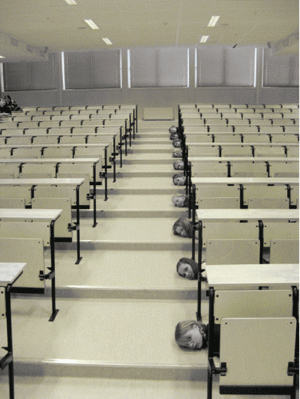
Figure 4.11 “House Gymnastics”
Foto: Ida Hjerkinn